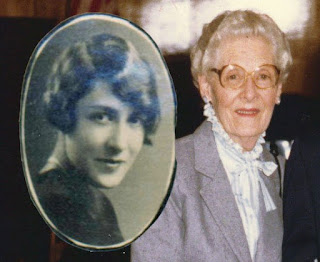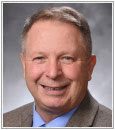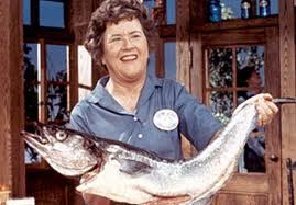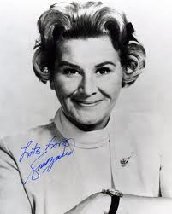Salt is a mineral composed primarily of sodium chloride (NaCl), a chemical compound belonging to the larger class of salts; salt in the form of a natural crystalline mineral is known as rock salt or halite. Salt is present in vast quantities in seawater. The open ocean has about 1.2 oz of solids per liter of sea water, a salinity of 3.5%.
Salt is essential for life in general, and saltiness is one of the basic human tastes. Salt is one of the oldest and most ubiquitous food seasonings, and salting is an important method of food preservation.
Some of the earliest evidence of salt processing dates to around 6,000 BC, when people living in the area of present-day Romania boiled spring water to extract salts; a salt-works in China dates to approximately the same period. Salt was also prized by the ancient Hebrews, the Greeks, the Romans, the Byzantines, the Hittites, Egyptians, and the Indians. Salt became an important article of trade and was transported by boat across the Mediterranean Sea, along specially built salt roads, and across the Sahara on camel caravans. The scarcity and universal need for salt have led nations to go to war over it and use it to raise tax revenues. Salt is used in religious ceremonies and has other cultural and traditional significance.
Salt is processed from salt mines, and by the evaporation of seawater (sea salt) and mineral-rich spring water in shallow pools. Its major industrial products are caustic soda and chlorine; salt is used in many industrial processes including the manufacture of polyvinyl chloride, plastics, paper pulp and many other products. Of the annual global production of around two hundred million tonnes of salt, about 6% is used for human consumption. Other uses include water conditioning processes, de-icing highways, and agricultural use. Edible salt is sold in forms such as sea salt and table salt which usually contains an anti-caking agent and may be iodised to prevent iodine deficiency. As well as its use in cooking and at the table, salt is present in many processed foods.
Sodium is an essential nutrient for human health via its role as an electrolyte and osmotic solute. Excessive salt consumption may increase the risk of cardiovascular diseases, such as hypertension, in children and adults. Such health effects of salt have long been studied. Accordingly, numerous world health associations and experts in developed countries recommend reducing consumption of popular salty foods. The World Health Organization recommends that adults consume less than 2,000 mg of sodium, equivalent to 5 grams of salt per day.
All through history, the availability of salt has been pivotal to civilization. What is now thought to have been the first city in Europe is Solnitsata, in Bulgaria, which was a salt mine, providing the area now known as the Balkans with salt since 5400 BC. Even the name Solnitsata means "salt works".
While people have used canning and artificial refrigeration to preserve food for the last hundred years or so, salt has been the best-known food preservative, especially for meat, for many thousands of years. A very ancient salt-works operation has been discovered at the Poiana Slatinei archaeological site next to a salt spring in Lunca, Neamț County, Romania. Evidence indicates that Neolithic people of the Precucuteni Culture were boiling the salt-laden spring water through the process of briquetage to extract the salt as far back as 6050 BC. The salt extracted from this operation may have had a direct correlation to the rapid growth of this society's population soon after its initial production began.[10] The harvest of salt from the surface of Xiechi Lake near Yuncheng in Shanxi, China, dates back to at least 6000 BC, making it one of the oldest verifiable saltworks.
There is more salt in animal tissues, such as meat, blood, and milk, than in plant tissues. Nomads who subsist on their flocks and herds do not eat salt with their food, but agriculturalists, feeding mainly on cereals and vegetable matter, need to supplement their diet with salt. With the spread of civilization, salt became one of the world's main trading commodities. It was of high value to the ancient Hebrews, the Greeks, the Romans, the Byzantines, the Hittites and other peoples of antiquity. In the Middle East, salt was used to ceremonially seal an agreement, and the ancient Hebrews made a "covenant of salt" with God and sprinkled salt on their offerings to show their trust in him. An ancient practice in time of war was salting the earth: scattering salt around in a defeated city to prevent plant growth. The Bible tells the story of King Abimelech who was ordered by God to do this at Shechem, and various texts claim that the Roman general Scipio Aemilianus Africanus ploughed over and sowed the city of Carthage with salt after it was defeated in the Third Punic War (146 BC).
Salt may have been used for barter in connection with the obsidian trade in Anatolia in the Neolithic Era. Salt was included among funeral offerings found in ancient Egyptian tombs from the third millennium BC, as were salted birds, and salt fish. From about 2800 BC, the Egyptians began exporting salt fish to the Phoenicians in return for Lebanon cedar, glass, and the dye Tyrian purple; the Phoenicians traded Egyptian salted fish and salt from North Africa throughout their Mediterranean trade empire. Herodotus described salt trading routes across Libya back in the 5th century BC. In the early years of the Roman Empire, roads were built for the transportation of salt from the salt imported at Ostia to the capital.
In Africa, salt was used as currency south of the Sahara, and slabs of rock salt were used as coins in Abyssinia. The Tuareg have traditionally maintained routes across the Sahara especially for the transportation of salt by Azalai (salt caravans). The caravans still cross the desert from southern Niger to Bilma, although much of the trade now takes place by truck. Each camel takes two bales of fodder and two of trade goods northwards and returns laden with salt pillars and dates. In Gabon, before the arrival of Europeans, the coast people carried on a remunerative trade with those of the interior by the medium of sea salt. This was gradually displaced by the salt that Europeans brought in sacks, so that the coast natives lost their previous profits; as of the late 1950s, sea salt was still the currency best appreciated in the interior.
Salzburg, Hallstatt, and Hallein lie within 11 miles of each other on the river Salzach in central Austria in an area with extensive salt deposits. Salzach literally means "salt river" and Salzburg "salt castle", both taking their names from the German word Salz meaning salt. Hallstatt was the site of the world's first salt mine. The town gave its name to the Hallstatt culture that began mining for salt in the area in about 800 BC. Around 400 BC, the townsfolk, who had previously used pickaxes and shovels, began open pan salt making. During the first millennium BC, Celtic communities grew rich trading salt and salted meat to Ancient Greece and Ancient Rome in exchange for wine and other luxuries.
The word salary comes from the Latin word for salt. The reason for this is unknown; a persistent modern claim that the Roman Legions were sometimes paid in salt is baseless. The word salad literally means "salted", and comes from the ancient Roman practice of salting leaf vegetables.
Wars have been fought over salt. Venice fought and won a war with Genoa over the product, and it played an important part in the American Revolution. Cities on overland trade routes grew rich by levying duties, and towns like Liverpool flourished on the export of salt extracted from the salt mines of Cheshire. Various governments have at different times imposed salt taxes on their peoples. The voyages of Christopher Columbus are said to have been financed from salt production in southern Spain, and the oppressive salt tax in France was one of the causes of the French Revolution. After being repealed, this tax was reimposed by Napoleon when he became emperor to pay for his foreign wars, and was not finally abolished until 1946. In 1930, Mahatma Gandhi led a crowd of 100,000 protestors on the "Dandi March" or "Salt Satyagraha", during which they made their own salt from the sea as a demonstration of their opposition to the colonial salt tax. This act of civil disobedience inspired numerous Indians and transformed the Indian independence movement from an elitist one with little popular support into a national struggle.
Switch up your dinnertime routine by serving up our cheesy, baked Spinach and Artichoke Calzones. They're perfect for holding right in your hand and dunking into your favorite marinara sauce. You might just find yourself making these as an on-the-go lunch, too!
- 1 (15-ounce) container ricotta cheese
- 1/4 cup grated Parmesan cheese
- 1 (9-ounce) package frozen chopped spinach, thawed and well drained
- 1 cup chopped artichokes
- 1 teaspoon garlic powder
- 1/4 teaspoon black pepper
- 2 (13.8-ounce) containers refrigerated pizza crust dough
- 2 cups shredded mozzarella cheese
- Cooking spray
- Preheat oven to 425º.
- In a large bowl, combine ricotta and Parmesan cheeses, spinach, artichokes, garlic powder, and pepper; mix well.
- Unroll pizza crusts onto a flat surface and cut each into 4 squares. Spoon an equal amount of spinach mixture onto each square, leaving a 1/2-inch border. Sprinkle each with mozzarella cheese. Fold each in half diagonally to form triangles. Using a fork, crimp edges to firmly seal. Place calzones on baking sheets and spray lightly with cooking spray.
- Bake 13 to 15 minutes, or until golden brown.
****Serve these with marinara sauce.

National Relaxation Day is an important day as we all need a break from the fast-paced and often hectic lifestyles we live. Taking time to recuperate and rejuvenate our tired minds and bodies may help prevent many health risks, too. Like the founder of this day suggested, too much work can make us sick, run-down, tired and that’s just wrong.
But he was right! It has been proven that stress can be harmful to our health, both mentally and physically. Most doctors will agree that finding ways to relax and finding ways to reduce stress will improve overall health.
What is your favorite relaxation activity?
- Reading a book
- Fishing with a friend
- A picnic in the park
- Walking along the beach
- Taking a drive in the country
- Spa
- Golfing
- Photography
- A movie
- Window shopping
- Lunch with friends
- Drinks with friends
- Watching sports
- Swimming
These are just a few of the many possible relaxation ideas that you may want to use to celebrate this holiday.
HOW TO OBSERVE NATIONAL RELAXATION DAY
Take a deep breath, unwind while viewing your favorite TV show, or just find a quiet spot in a park and enjoy the summer breeze.
NATIONAL RELAXATION DAY HISTORY
Sean Moeller founded National Relaxation Day in 1985 as a fourth-grader. In an interview with Valerie Monson in The Des Moines Register Sean suggested people shouldn’t do anything of real value. Cleaning and real work are not part of relaxation.
Q. How do I reduce stress at work?
A. The American Psychological Association recommends several tips for lowering stress at work. Similar to how we approach stressing our personal lives, it’s important to know what causes our stress. Once we know what those triggers are, we can develop ways to reduce our stress response. Taking deep breaths, stretching, reducing our workloads or even speaking to our supervisor can improve the kinds and amount of stress at work. In turn, we can learn to relax more easily.
Q. What’s the most relaxing job in the United States?
A. We’re fairly confident you can rule out President of the United States. However, doing something you love improves your job satisfaction. For example, working in an environment that is relaxing to you will be less stressful. If you don’t love the outdoors but you spend most of your workday outdoors, you might find your job more stressful than someone who loves the outdoors. So, it’s a matter of perspective.
















